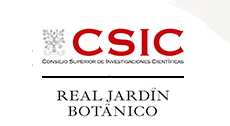Scientific Area
Abstract Detail
Nº613/1134 - Pollinator shifts, floral evolution, and geographic range evolution in the genetic divergence of three Aeschynanthus species
Format: ORAL
Authors
Jing-Yi Lu1, Yaowu Xing2, Hong Truong Luu3, Ming-Xun Ren4, Shao-Jun Ling4, and Richard H. Ree1,5
Affiliations
1 Committee on Evolutionary Biology, University of Chicago, Chicago, USA
2 CAS Key Laboratory of Tropical Forest Ecology, Xishuangbanna Tropical Botanical Garden, Chinese Academy of Sciences, Mengla, China
3 Southern Institute of Ecology, Vietnam Academy of Science and Technology, Ho Chi Minh City, Vietnam
4 Center for Terrestrial Biodiversity of the South China Sea, Hainan University, Haikou, China
5 Negaunee Integrative Research Center, Field Museum, Chicago, USA
Abstract
How do plants evolve under a geographic mosaic of pollinators? The Grant-Stebbins model predicts that local adaptation to different pollinators may drive ecological speciation. We test this hypothesis in the SE Asian genus Aeschynanthus, whose 160 species mostly overlap with their putative pollinators, nectar-specialist sunbirds. A conspicuous exception is A. acuminatus, a species widespread across mainland East Asia that also occurs in Taiwan, beyond the range of sunbirds. In Taiwan, A. acuminatus is exclusively pollinated by a mixed group of generalist passerines. Less is known about its pollination in mainland Asia, where both sunbirds and generalist passerines are available. In this study, we investigate the roles of pollinator shifts and range expansions in the genetic divergence ofA. acuminatus from its closest relatives, A. moningeriae and A. pedunculatus. Pollinator observations of A. acuminatus across its range showed varied degrees of visitation by both sunbirds and generalist passerines on mainland Asia. In contrast, its closest relatives are both exclusively pollinated by sunbirds. Genome-wide SNP analysis revealed a mainland origin in A. acuminatus, preceding its range expansion to Taiwan. The sunbird specialists have independent origins: A. moningeriae is nested within A. acuminatus and A. pedunculatus is reciprocally monophyletic. The origin of A. acuminatus was thus likely on the mainland, coincident with a shift from specialized sunbird pollination to a more generalized pollination system that facilitated its colonization of Taiwan. A. moningeriae represents a localized reversal to sunbird specialization on Hainan. The evolutionary history of A. acuminatus and its closest relatives was not consistent with the classic Grant-Stebbins model. Instead, our research exemplifies how multiple transitions between generalized and specialized pollination systems can influence the genetic divergence and range dynamics, and the potential for speciation.




